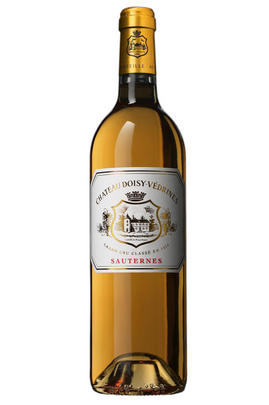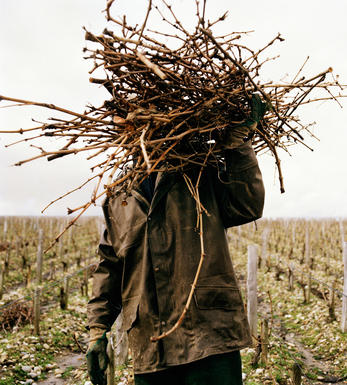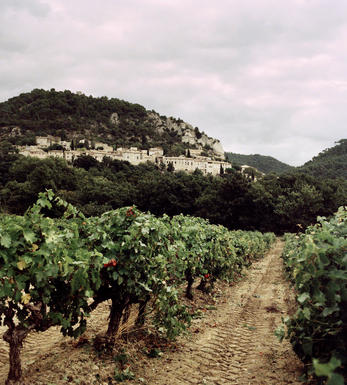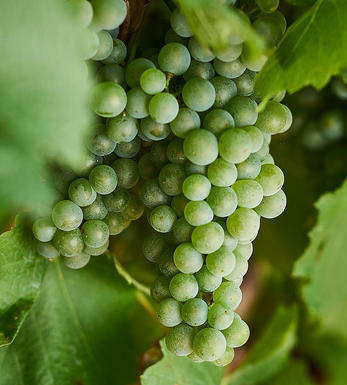
2001 Château Doisy-Védrines, Sauternes, Bordeaux

Critics reviews
Limpid gold in colour, the 2001 Doisy-Védrines offers beeswax, honeysuckle and quince jelly on the nose; hints of gingerbread emerge with time. The oak comes through a bit here, which is odd after two decades.
The palate is vibrant and tensile on the entry, delivering the weight one expects from this Barsac, allied with a fine bead of acidity that imparts tension. Tangy marmalade and quince notes appear toward the finish. This is a fine Doisy-Védrines that is à point.
Drink 2021 - 2042
Neal Martin, Vinous.com (September 2021)
Grilled apricots and nectarines on the nose, rich in texture with clear marmalade and saffron spices; this is intense and full of character, emphasising crème caramel on the finish. The older tertiary aromatics come through as it unrolls in the glass to show tobacco leaf and campfire smoke.
Fermentation in 60% new oak. 125g/l residual sugar, 3.8pH. Harvest September 27 to October 30 over five separate passes through the vineyard.
Drink 2021 - 2036
Jane Anson, Decanter.com (January 2021)
About this WINE

Chateau Doisy-Vedrines
Château Doisy-Védrines,the largest of the Doisy estates and a 2éme Cru Classé Barsac property has been owned by the Castéja family since 1946. The family also own Batailley and Trotte Vieille).
Doisy-Védrines's 27 hectares of vineyards are situated on the highest plateau in Barsac and are planted with 80% Sémillon, 15% Sauvignon Blanc and 5% Muscadelle. The grapes are picked in several "tries" and the yields are painfully low, even by Sauternes standards. Fermentation starts in temperature-controlled, stainless steel vats for around a week before the must is transferred to 100% new oak barriques. The wine remains in barrique for 18-20 months.
Doisy-Védrines is one of the richest and most full-bodied wines in Barsac and it significantly uses the Sauternes AC rather than the Barsac one. It needs at least 5 years of bottle ageing and the best vintages will keep for up to 25 years.

Barsac
Barsac is one of the communes of the Sauternes appellation (along with Bommes, Fargues, Preignac and Sauternes itself). With marginally flatter land and soils of red sand and light gravels, the commune adjoins the northern boundary of the commune of Sauternes, separated by the Ciron River, whose cold waters are so instrumental in producing the region's necessary autumn fogs.
There are just over 800 hectares under vine, producing nearly two million bottles in an average year. The châteaux can choose to sell their wine under either the Sauternes or the Barsac appellation, but stylistically the wines are arguably a little lighter in style than those of Sauternes.
The leading producers are Châteaux Climens and Coutet, with Châteaux Nairac, Doisy-Daëne and Doisy-Vedrines making good value, attractive wines.

Sauvignon Blanc & Sémillon
The blend used for White Graves and Sauternes and rarely encountered outside France. In the great dry whites of Graves, Sauvignon Blanc tends to predominate in the blend, although properties such as Smith Haut Lafite use 100% Sauvignon Blanc while others such as Laville Haut Brion have as much as 60% Sémillon in their final blends. Sauvignon Blanc wines can lose their freshness and fruit after a couple of years in bottle - if blended with Sémillon, then the latter bolsters the wine when the initial fruit from the Sauvignon fades. Ultimately Sauvignon Blanc gives the wine its aroma and raciness while Sémillon gives it backbone and longevity.
In Sauternes, Sémillon is dominant, with Sauvignon Blanc playing a supporting role - it is generally harvested about 10 days before Sémillon and the botrytis concentrates its sweetness and dampens Sauvignon Blanc`s naturally pungent aroma. It contributes acidity, zip and freshness to Sauternes and is an important component of the blend.


Buying options
Add to wishlist
Description
Limpid gold in colour, the 2001 Doisy-Védrines offers beeswax, honeysuckle and quince jelly on the nose; hints of gingerbread emerge with time. The oak comes through a bit here, which is odd after two decades.
The palate is vibrant and tensile on the entry, delivering the weight one expects from this Barsac, allied with a fine bead of acidity that imparts tension. Tangy marmalade and quince notes appear toward the finish. This is a fine Doisy-Védrines that is à point.
Drink 2021 - 2042
Neal Martin, Vinous.com (September 2021)
wine at a glance
Delivery and quality guarantee